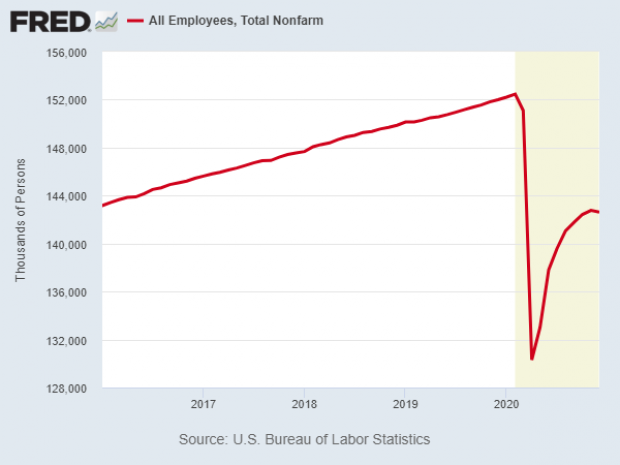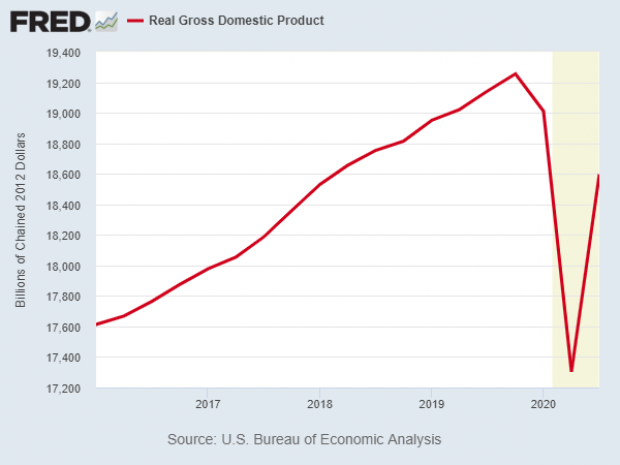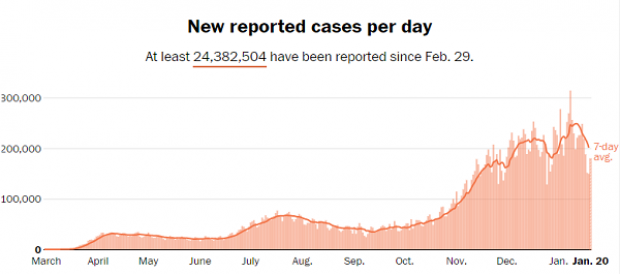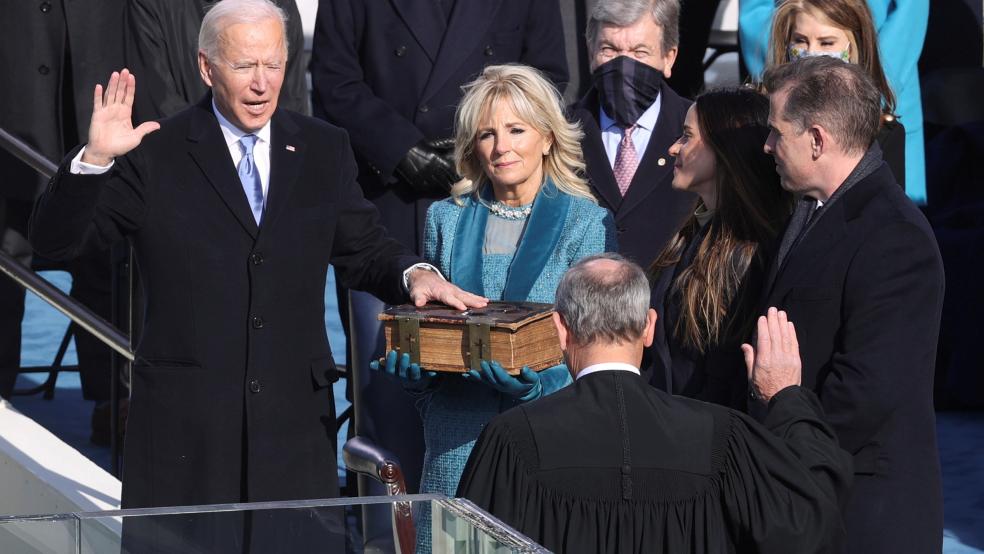President Joe Biden inherits an economy suffering from the effects of a pandemic that’s still causing enormous pain throughout the country.
While the economy has made a comeback in some areas since its lowest point last spring, there are still major problems the new president needs to confront. “We’re in a catastrophic health and economic crisis,” Austan Goolsbee, who chaired President Obama’s Council of Economic Advisers, told Marketplace Wednesday. “We’re still as bad by some measures as the lowest point of the Great Recession.”
Many economists say the prospects for recovery are reasonably good, as long as the new administration can get a handle on the pandemic. “There remains a tremendous amount of underlying strength in the U.S. economy,” Douglas Holtz-Eakin, who led President George W. Bush’s Council of Economic Advisers, told Marketplace. “If we can sustain those who’ve been out of work with the relief that we’ve seen Congress pass and deal with the virus, there’s a good platform to jump off from.”
Biden has proposed a massive relief package totaling $1.9 trillion to help households and businesses stay afloat in what could be the peak of the Covid-19 crisis. Here are three key areas that show just how far the economy still has to go.
Employment: The economy is down nearly 10 million jobs compared to where it was at the start of the crisis. Employment fell by more than 22 million in the spring as large swaths of the economy shut down in response to the pandemic. About 12.3 million jobs have been regained – an impressive number, but one that leaves millions still out of work, with losses concentrated in depressed industries that involve face-to-face interactions, including restaurants, entertainment and travel.
The unemployment rate has fallen much faster than expected, holding steady at 6.7% in December. But the millions of workers who have dropped out of the workforce don’t show up in the official unemployment rate, suggesting the problem is much worse than the headline number indicates. In December, payrolls shrank again, bringing seven months of job growth to an end.
Job losses could continue in January, economists say, but most expect to see a significant turnaround after that, driven by the combined effect of the $900 billion stimulus package signed into law in December and the slow but steady return to normalcy caused by mass vaccinations.
The question for Biden is how many of the job losses are permanent, and how long it will take for the economy to create enough new jobs to absorb the millions of people who are looking for work.

GDP: After falling like a stone in the spring, the economy bounced back at a record pace in the third quarter. But growth is expected to have slowed considerably in the fourth quarter, bending the curve away from the v-shaped recovery some economists had hoped for.
The $900 billion stimulus package currently in effect is expected to help boost the economy’s growth rate and prevent it from slipping into a potential double-dip recession. Biden’s proposed $1.9 trillion stimulus package would amplify that effect considerably. Mark Zandi, chief economists at Moody's Analytics, projects a growth rate of 8% in 2021 if Biden’s plan passes, with employment returning to pre-pandemic levels in 2022.
Zandi doubts that Congress will pass Biden’s plan as it currently stands, though, and expects to see a smaller package worth about $750 billion – enough to push the growth rate to 5% for the year.

Covid-19 cases: It may not be a conventional economic measure, but it may be the single most important factor in determining the economy’s course over the next year: the Covid-19 case count.
As Michael Gapen, chief U.S. economist at Barclays, told Bloomberg earlier this month, “if we can get control of the pandemic, then we can restore economic activity and labor market conditions over the course of this year.”
Biden is taking direct aim at the issue, with one of his first executive orders calling for the use of face masks on all federal property – a marked shift from the previous administration, in which face masks were seen with skepticism if not suspicion. Biden has also pledged to disperse 100 million Covid vaccine shots in his first 100 days, a lofty target but one that suggests that the new administration intends to take every step it can to slow the spread of the disease.





